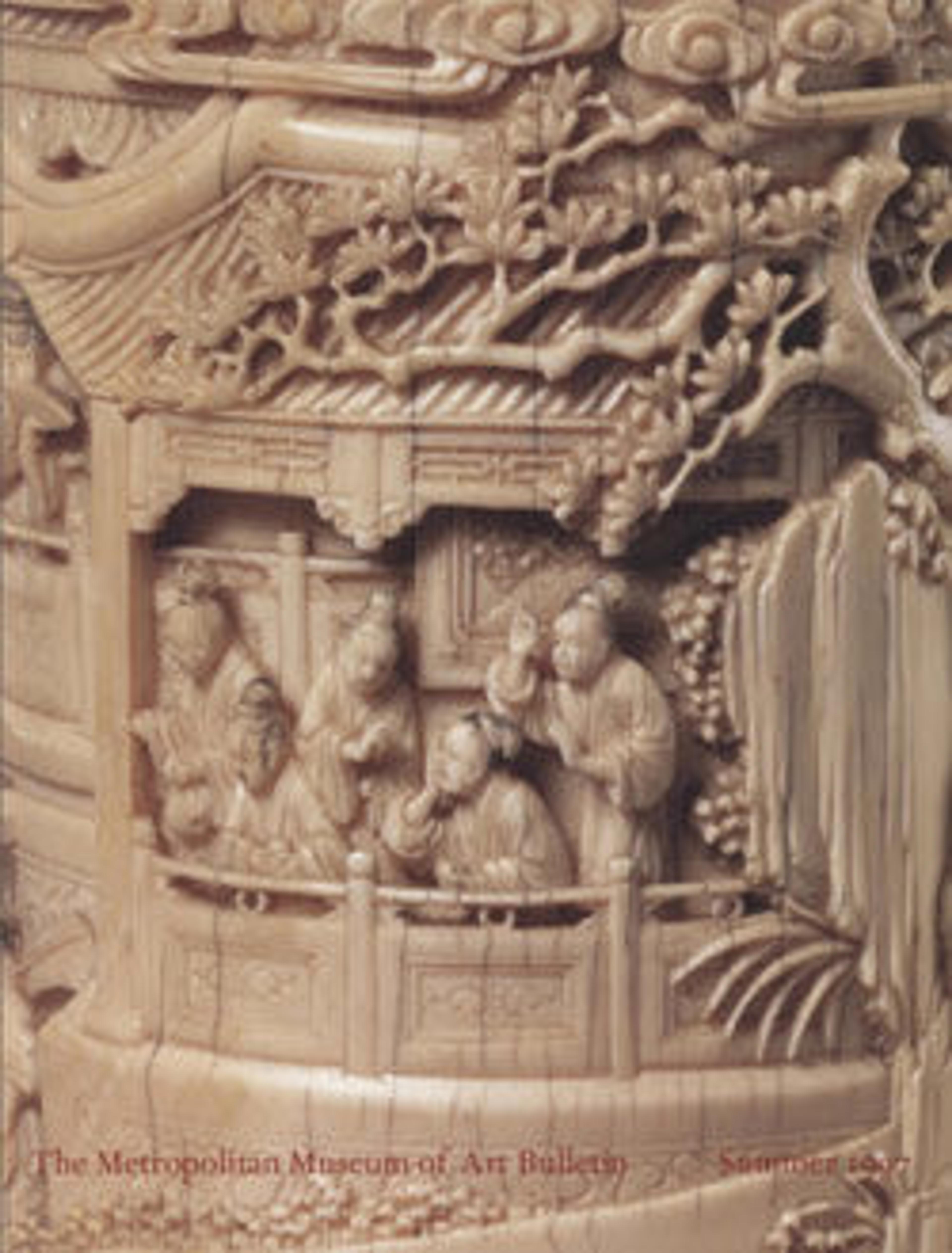Seated luohan with a servant
This luxurious carving was made for the Qing imperial court. The luohan, a Buddhist sage, sits in meditation with a rosary while a boy attends at his feet. From his long eyebrows and position beneath a tree, this luohan may be identified as Nakula. A poem of praise for Nakula in the upper right was authored by the Jiaqing emperor (r. 1796–1820) and inscribed by his elder brother Yongxing (1752–1823).
Artwork Details
- 清中期 孔雀石葉廣羅漢山子
- Title:Seated luohan with a servant
- Period:Qing dynasty (1644–1911)
- Date:late 18th–early 19th century
- Culture:China
- Medium:Malachite
- Dimensions:H. 9 in. (22.9 cm); W. 7 3/4 in. (19.7 cm)
- Classification:Hardstone
- Credit Line:Bequest of Edmund C. Converse, 1921
- Object Number:21.175.136
- Curatorial Department: Asian Art
More Artwork
Research Resources
The Met provides unparalleled resources for research and welcomes an international community of students and scholars. The Met's Open Access API is where creators and researchers can connect to the The Met collection. Open Access data and public domain images are available for unrestricted commercial and noncommercial use without permission or fee.
To request images under copyright and other restrictions, please use this Image Request form.
Feedback
We continue to research and examine historical and cultural context for objects in The Met collection. If you have comments or questions about this object record, please contact us using the form below. The Museum looks forward to receiving your comments.
